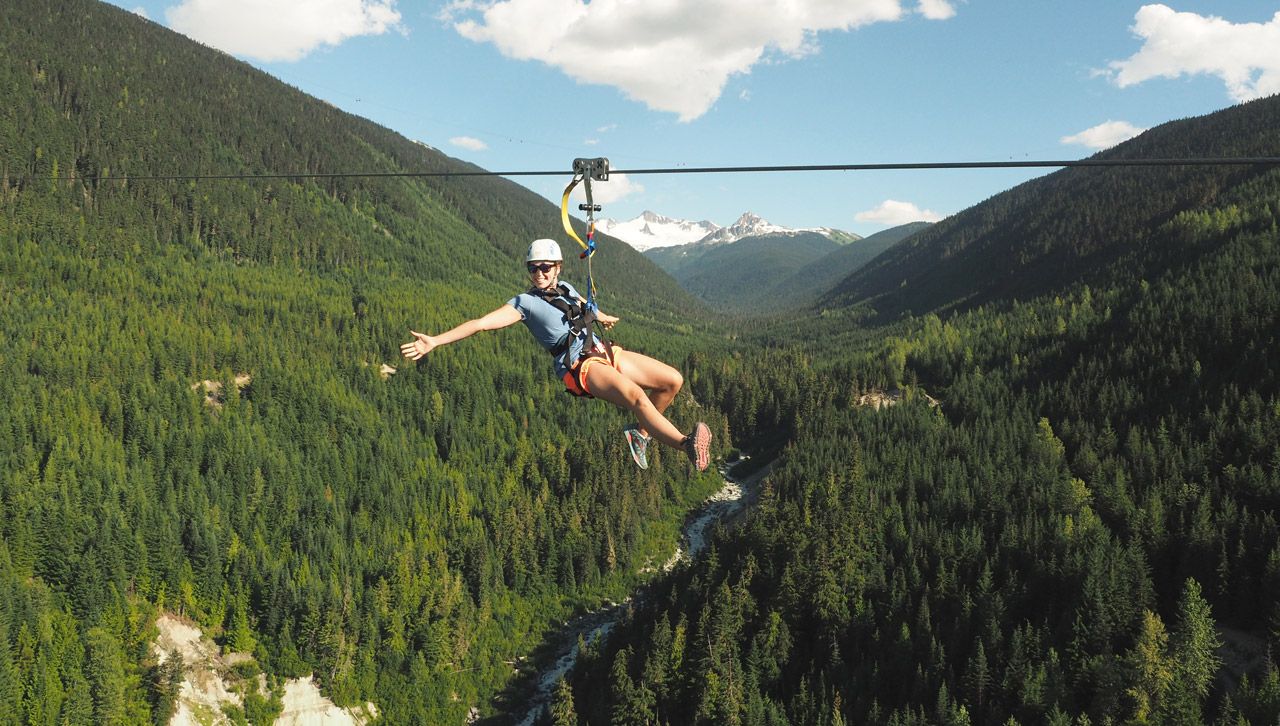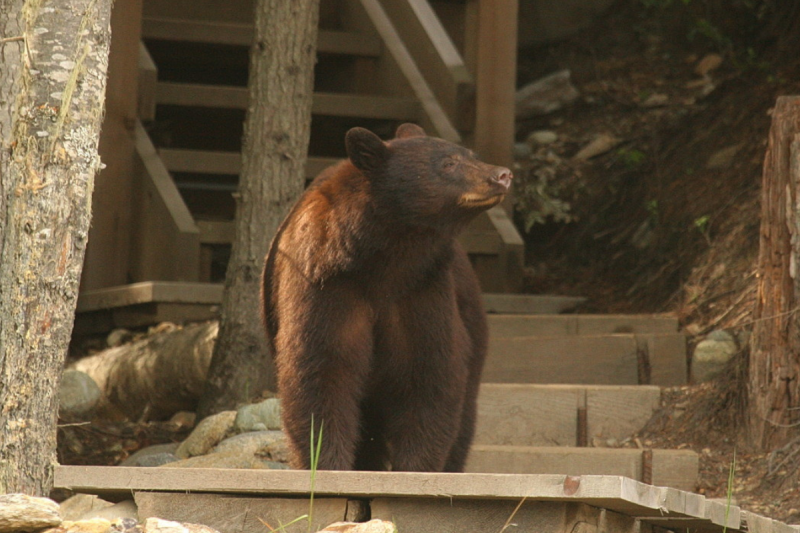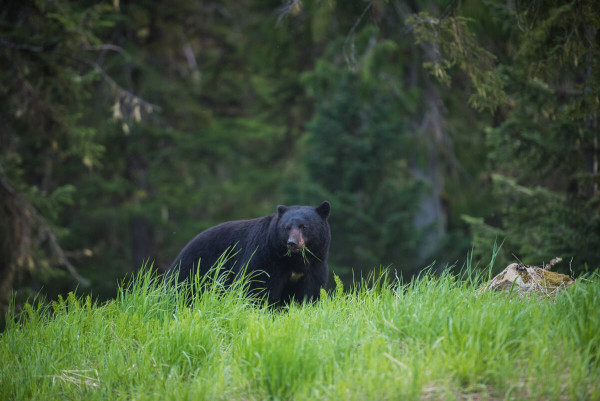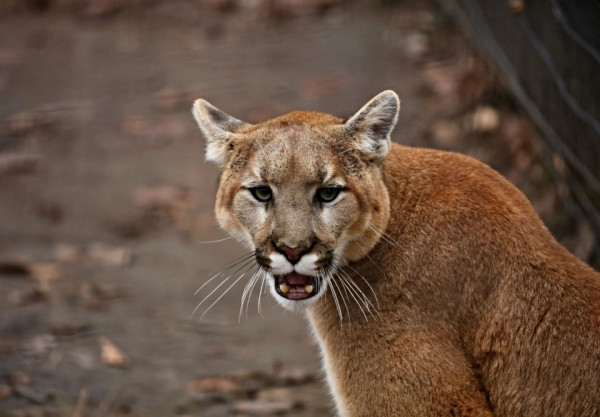 Call Toll Free: 1.866.935.0001
Call Toll Free: 1.866.935.0001
 Call Toll Free: 1.866.935.0001
Call Toll Free: 1.866.935.0001


Whistler isn’t just a world-class destination for skiing, biking, and hiking—it’s also a place where wild animals still roam free.
The forests, meadows, and mountains surrounding this small village are home to a fascinating mix of wildlife, including some of nature’s most impressive predators.
Whether you’re out on the trails in Garibaldi Provincial Park or exploring deep backcountry, it’s important to know about Whistler’s Big 4 Predatory Animals: Black Bears, Grizzly Bears, Cougars, and Wolves.

Photo: Tourism Whistler/Mike Crane
Scientific Name: Ursus americanus
Common Sightings: Spring to fall, particularly at dawn and dusk.
When You Might See Them: Spring through fall, especially mornings and evenings.
Black bears are the most commonly seen wild animals in Whistler, and they’re a cherished part of the local landscape. From munching on dandelions in alpine meadows to fishing in creeks, these bears are busy throughout the warmer months.
What to Know:
Despite the name, they can be black, brown, or cinnamon in color.
They’re generally peaceful and shy.
Most of their food comes from plants, like berries, grasses, and roots.
If You See One:
Stay calm and give the bear space.
Speak in a calm, firm voice.
Back away slowly—never run.
Keep pets close and leashed.
Scientific Name: Ursus arctos horribilis
Common Sightings: Rare near Whistler Village, more likely in remote alpine and backcountry areas north and west of the town.
When You Might See Them: Rarely around town, more often in remote alpine areas.
Grizzlies are larger and more powerful than black bears and usually stay in more remote, wild areas. They’re an important part of BC’s wilderness and symbolize the rugged, untamed beauty of the region.
What to Know:
They have a distinct shoulder hump and a broader face.
They love open meadows, river valleys, and salmon streams.
Grizzlies usually avoid people when left undisturbed.
If You See One:
Speak calmly and slowly back away.
Don’t run or shout.
If you’re carrying bear spray, have it ready just in case.
If a grizzly seems defensive (like protecting cubs), it’s best to stay still or play dead if contact happens.

Photo: iStock/Karel Bock
Scientific Name: Puma concolor
Common Sightings: Extremely rare, but they inhabit the dense forests around Whistler.
When You Might See Them: Very rare—these cats prefer to keep to themselves.
Cougars are the most elusive of Whistler’s Big 4. These quiet and graceful animals are mostly active at dawn and dusk, moving silently through the forest in search of deer and other animals.
What to Know:
Adult cougars can be up to 2 meters (6.5 feet) long, including their tail.
They’re excellent climbers and jumpers.
While they’re very powerful, they’re naturally wary of humans.
If You See One:
Don’t turn your back. Make yourself look big.
Talk firmly and slowly back away.
If it approaches, shout and wave your arms.
In the very rare case of an attack, fight back.
Scientific Name: Canis lupus
Common Sightings: Rare, but present in backcountry areas around Whistler.
When You Might See Them: Occasionally in backcountry areas, especially in the evening.
Wolves are incredibly intelligent and live in tightly bonded family groups called packs. Although they tend to avoid people, they do roam the vast forests around Whistler and play an important role in nature’s balance.
What to Know:
Wolves are usually shy and avoid busy trails.
You might hear their distant howls in remote areas.
They prefer wild prey like deer or rodents, not pets or people.
If You See One:
Stay calm. Don’t run.
Stand tall and make noise to encourage it to move on.
Keep dogs leashed, as they can accidentally attract unwanted attention from curious wildlife.
Coexisting with Whistler’s Wild
Whistler’s wild animals are part of what makes this place so special. Seeing a bear grazing on a hillside or spotting wolf tracks in the snow can be a magical moment. By learning a bit about these animals and how to act respectfully around them, we can all enjoy the outdoors more safely and help protect local wildlife for generations to come.
Whether you're a visitor or a local, the best way to experience Whistler’s wilderness is with curiosity, respect, and a little bit of know-how. The mountains are their home—let’s be good neighbors.
We use tools such as cookies and similar technologies to track, analyze, and personalize your experience and ads, and share data with our partners. To find out more about the cookies we use, see our Privacy Policy. Change your preferences anytime using the Manage Cookies link at the bottom of the page.